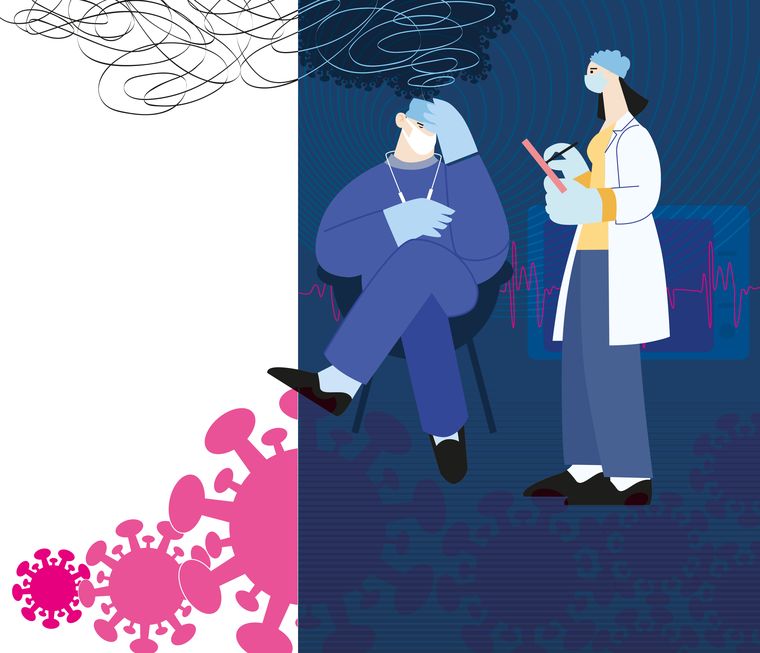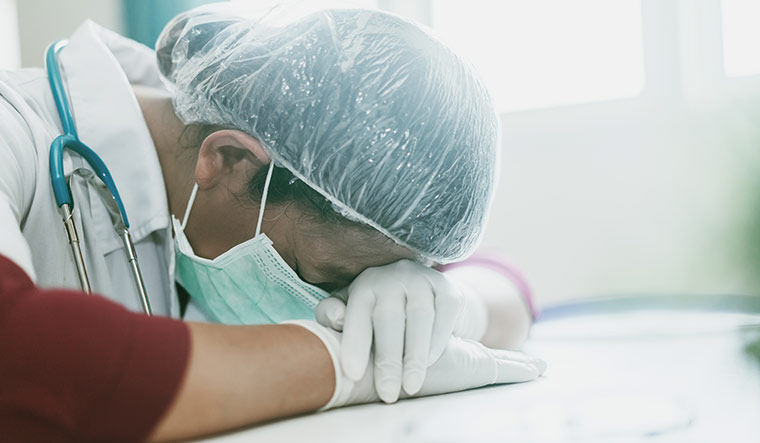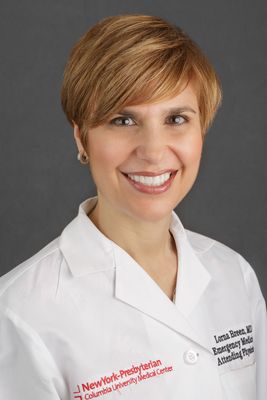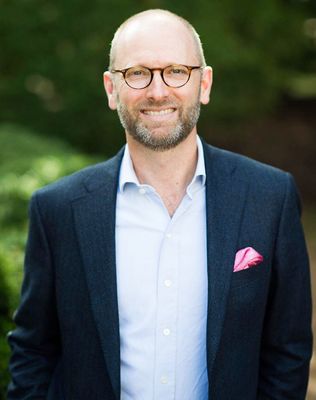In April 2020, Dr Lorna M. Breen, 49, an emergency room physician at New York-Presbyterian Allen Hospital in upper Manhattan, called her sister Jennifer Feist, who lives in Virginia. As per a July 11, 2020, article in The New York Times, Breen was an overachiever in every level of her career, and was managing one of the busiest emergency rooms in New York City. That week in April, New York reported the highest number of fatalities from Covid-19. Large hospital systems and emergency rooms were overrun by patients seeking help with severe infection, low oxygen levels and high fever. The emergency department Breen had been managing was not an exception.
Doctors and nurses were asked to make decisions about who will get a ventilator or an ICU bed, which amounts to decisions about who will live and who will die. The death and suffering they witnessed during the tsunami of this pandemic was unimaginable. In addition, there was confusion about the management of Covid-19, its complications and the lack of specific treatments or PPE to protect themselves from the infection.
Breen did not know where to turn and she called Jennifer, who picked her up from New York City and helped to get her admitted to an inpatient psychiatric ward at University of Virginia Medical Center. In a few weeks, she was discharged and was staying with her mother. On April 26, Breen took her own life.
Unfortunately, Breen is not alone. Doctors and nurses have two times higher risk of committing suicide than the general population. Uncontrollable health care crises like Covid-19 have exacerbated that and brought it to the public’s attention. One of the first ‘Covid suicide’ cases in the Indian medical fraternity was of Dr M. Kannan, a postgraduate resident in the orthopaedic surgery department of Stanley Medical College, Chennai. He jumped from the third floor of his hostel in July 2020. As per news reports, he was taking care of Covid-19 patients until a few hours prior to his death.
As a doctor and leader in a large cancer centre, I witnessed this crisis unfolding first-hand. It was early 2020, when there was confusion and misinformation about mask-wearing. Data was still being collected about the efficacy of masks in preventing the spread of the virus, and colleagues were conflicted. I will never forget a call I received from a colleague one night. “Dr Abraham, I have sick parents at home and I need to protect them,” he said. “I just want to make sure that I am not bringing Covid home.”
The signs and symptoms of burnout we witnessed were alarming. Dr Amy Sullivan, director of behavioural medicine at the Mellen Center for Multiple Sclerosis Treatment and Research at Cleveland Clinic, says that “burnout is about a low sense of accomplishment, loss of meaning and sense or value. It is a state of vital exhaustion”. Through the height of the pandemic, not only were health care workers working long hours to take care of patients, they were also affected on a very personal level.
In our cancer centre, our care teams worried about patients potentially missing lifesaving treatments because of delays due to Covid-19. They also worried about contracting the virus themselves and exposing immunocompromised family members or ailing parents to it. Social isolation added to their stress as many of our health care workers spent months separated from family and friends. On top of all of this, more than 50 per cent of the care transitioned to virtual visits, frustrating both providers and patients as they adapted to new technology and a new way of delivering and receiving care.
One afternoon in April 2020, I talked to my family about the possibility of me dying during the pandemic. It was not pleasant. I was not alone in doing this. Thousands of health care workers have had similar conversations with their family about their own vulnerability.
A study among US health care workers, published in The Lancet’s open-access journal EClinicalMedicine, showed that 3,431 of the 20,947 respondents were doctors or resident physicians. Of them, about 30 per cent experienced high stress, which was similar to the overall results of the survey. Half of physician respondents reported fear of exposure to Covid-19 as the reason for their high stress compared with 60.76 per cent overall. A quarter of physicians also experienced anxiety, with 37.3 per cent having work overload and 47.73 per cent reporting symptoms of burnout. But 37 per cent of physicians had a restored sense of purpose during the pandemic, and 50 per cent felt valued by their organisation, which is slightly higher than the overall rate of 45.9 per cent.
Breen’s suicide led to a rallying cry across the globe to focus on mental health and burnout among health care workers. Unfortunately, many health care workers keep it all inside and are not able share or seek help. Breen’s sister and brother-in-law, Jennifer and Corey Feist, have made it their goal to shine a light on this crisis among health care workers. They started the Dr. Lorna Breen Heroes Foundation with a mission to reduce burnout of health care professionals and safeguard their well-being and job satisfaction.
On October 9, 2021—Breen’s 51st birthday—I talked to Corey Feist, a health care executive with more than 20 years of experience. He currently serves as the chief executive officer of the University of Virginia Physicians Group, the medical group practice of the University of Virginia, comprising 1,200-plus physicians and advanced practice providers. He cannot stress enough that “physicians as healers have to take care of their mental health and physical health”. When the health care workforce is burned out, he says, there is a 200 per cent increase in medical errors. “By not taking care of yourself, you are actually impeding your ability to do what you are trained to do, which is to take care of patients the best possible way,” he adds. During the pandemic, there has been an increase in demand for peer support programmes in the US, he says. “Pairing physicians with others to make sure they are okay should be considered. This can potentially overcome some of the challenges physicians face while taking care of themselves and colleagues,” says Feist.
Also read
- Best Hospitals Webinar, 2021: THE WEEK honours excellence in health care
- Health care gets an upgrade with lessons from COVID-19
- THE WEEK-Hansa Research Best Hospitals Survey 2021
- Nurses put the care in health care, more so during the pandemic
- Challenges of being a male nurse
- Artist Nilima Sheikh's 'Salam Chechi' is a tribute to nurses
While checking in on each other is critical and can happen without a formal process, Feist says it is important that hospitals and health systems understand and assess what the workforce wants. “The organisational process and design, even prior to the pandemic, has created a burnout level among health care workers approaching 50 per cent, and now it is exponentially greater,” he says. “There are many areas where we can improve, such as electronic medical record efficiencies, team-based approach to care, scribe programmes and other interventions which create an easier place to do what you are trained to do as a nurse or doctor. If the administration does not look at the root cause of the problem, then we are asking for the doctors and nurses to take the burden of the problem by being resilient. That is not fair, nor is it possible. The workforce is telling us that mindfulness and meditation apps won’t solve this problem.”
Family members, too, play a critical role. “They should be attuned to what is going on, be supportive and ready to intervene—before there is an irreversible crisis,” says Feist. “It is important to talk to family members and use the available helpline for suicide to get help before it is too late.” Breen’s death impacted the Feists in many ways. Her absence is a hole that cannot be filled, he says. “We are trying to extend through the foundation, the care she had for her colleagues and her patients,” says Feist. “We hope to continue her legacy.”
Feist recounts how Breen “was absolutely convinced that obtaining mental health treatment for the first time in her life would have not only impacted her ability to care for her patients, but also obtaining hospital credentials or licence in New York State”. “The licensure piece is completely inaccurate; you will not lose your licence by seeking mental health treatment,” he clarifies. “There is quite a lot of stigma around that. The professional stigma she thought would surround her, or being perceived as someone who cannot keep up with her colleagues and peers, became so insurmountable to her. We believe that fear played a significant role in her decision to take her own life. For us, that is not acceptable. We cannot have one more Dr Breen. We must do everything possible to change the culture within health care so that we can change the outcome for doctors and nurses in the US and around the world.”
My conversation with Feist confirmed what I, too, have seen as a physician—burnout among doctors and nurses is unfortunately common. It is important to recognise the vulnerability of health care workers during the Covid-19 crisis. As per Centers for Disease Control and Prevention, “fatigue and burnout may also result from chronic workplace stress and exposure to traumatic events during the Covid-19 pandemic.”
When the world is changing in a very unpredictable way with no clear path ahead, it is the role of leaders to show steady hands and bring a level of certainty and sense of purpose in the middle of chaos. Cleveland Clinic leaders recognise the importance of addressing health care stress and burnout, especially during the pandemic. One of the most important decisions the leadership at Cleveland Clinic took early on in the pandemic was making the commitment to not furlough its employees or reduce their compensation. It was a momentous decision, when many large systems were laying off staff or cutting benefits.
Additional steps included: discussing burnout openly in small and large groups, and exploring vulnerability in a constructive manner, which allowed caregivers to be honest about their fears and concerns.
building a peer support programme provided by trained professionals that allowed caregivers in distress to reach out to a team of professionals to get help. This programme provided services focused on their well-being 24 hours a day.
providing access to mental health services virtually or in-person.
forming teams to support caregivers who tested positive for Covid-19. Services included at-home medical monitoring and meal assistance for the caregiver and their families.
This is not just a phenomena in the western world. It is universal. As health care workers, we need to support each other, and our family needs to be aware of it. Most importantly, as Feist said, the health care industry needs to take steps to address the root problem of burnout among health care workers. We need to seize the moment and use the pandemic as a catalyst to focus on their mental health. The acute crisis is waning down, but our world has changed forever and the impact of the pandemic will continue for a long time.
The writer is MD, FACP, professor of medicine, chairman of the department of haematology and oncology, and interim chairman, Cancer Center, Cleveland Clinic.






